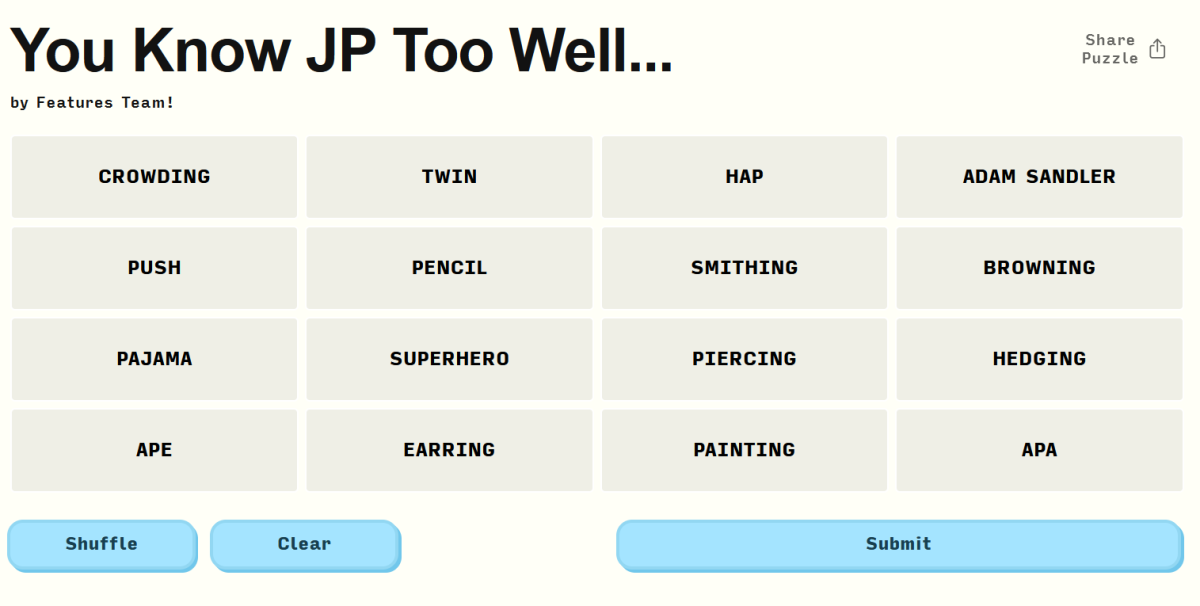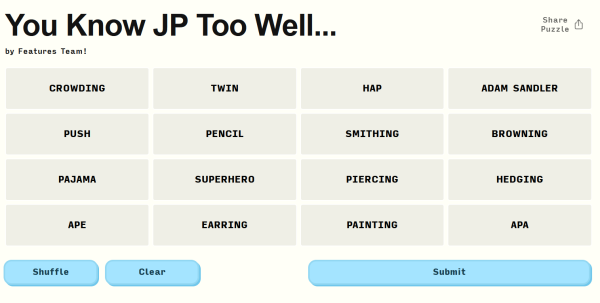Argu-MEANT to Be
Two guys having an argument, what could they be fighting about?
April 17, 2023
The idea of an argument immediately conjures thoughts of two people shouting over one other, struggling to win verbal supremacy. Even Google sees the connotation of the word “argument” as negative, displaying it as a synonym for “fight”. Fifty-seven percent of teenagers state that they rarely argue with anyone, and fifteen percent say they never argue at all. At first, this may seem mind-blowing and even a little concerning. Could it be that arguing is truly always bad? Why is the word “argument” so commonly surrounded with a negative connotation? When did it all begin?
It all starts in 480 B.C.E. In Greece, people were known to admire wisdom so much that they would hire experts on arguments called sophos to give them insight. Similar to modern day therapists, sophos were paid for their services. However, the people of Greece didn’t know that the sophos were scamming them all along until the famous Socrates and Plato exposed the sophos for their malpractices. Socrates and Plato decided to offer authentic advice to the people. Aristotle, a reputable philosopher, wrote a book called The Art of Rhetoric, where he mentioned the rules of arguing and the three aspects, logos (logic); pathos (emotion); ethos (credibility), that comprise an argument. Later, a Roman named Cicero wrote five books on what he believed were the five canons of argument: invention, arrangement, style, memory and delivery. When the Roman empire fell, rhetoric, the art of persuading, began to slowly die out. However, during the Renaissance, oral rhetoric experienced a resurgence. Eventually, the idea of rhetoric became very important and contributed to the education of lawyers, politicians, priests, and writers. Today, our form of formal arguing is debating competitively!
Communication skills also play an essential role in the outcome of an argument or a discussion. While effective communication can help resolve disputes and build stronger relationships, poor communication can lead to misunderstandings, hurt feelings, and damaged relationships. Some communication blockers that are commonly seen amongst individuals are interrupting, speaking without responding, and using accusatory statements. We communicate verbally everyday, yet it remains the most challenging form of communication to properly utilize. Arguments are most commonly expressed in this form and are most likely to go out of hand quickly as debaters lose control of their composure. Active listening, empathy, and open-mindness are vital to a positive outcome.
The second form of communication is nonverbal, including the way a person looks, dresses, acts, and reacts. Having positive body language, such as nodding your head to show that you are listening, can send clear, explicit messages. Specifically, posture can reveal one’s personality and confidence level. When arguing, avoiding eye contact and folding your arms indicate that you’re feeling defensive. A slouched posture can indicate fatigue or boredom.
The final form of communication includes using visual elements to get a message across, inspire change, or evoke an emotion. This form of communication is commonly used in protests or campaigns, another form of argumentation. Likewise, communication through writing requires accuracy, proper usage of composition, and coherence. Without the correct usage of different types of communication, an argument can easily become obscured as it is weighed down by misunderstandings, lack of clarity, and personal attacks.
So how do you identify a healthy argument? Well, that isn’t so easy — there are many factors that can influence how an argument is perceived. Moreover, it can be challenging to identify them due to biases, emotional appeals, complexity, lack of information, and differing perspectives. It’s important to evaluate an argument critically, with an open mind and a willingness to consider multiple viewpoints in order to determine its overall quality. Some fundamental points to look out for when evaluating an argument is if it’s based on sound reasoning, evidence, and logic. A good argument is constructive, respectful, and seeks to find common ground and resolution to the issue at hand. A bad argument is biased on faulty reasoning, lacks evidence, and may be disrespectful or aggressive. But not to worry: you can be a part of constructive arguments by actively listening, seeking to understand, encouraging respectful dialogue, and knowing when to step back.
Knowing the do’s and don’ts while arguing can completely transform the outcome of an argument. Overall, arguing is a natural and necessary part of communication and can be a positive and productive way to exchange ideas, solve problems, and reach agreements. It can foster critical thinking, creativity, and innovation. Although arguments still carry a negative connotation, by recognizing positive aspects in the other person’s opinion and developing effective communication skills, you can engage in constructive and respectful arguments and contribute positively to the greater social discourse.








































